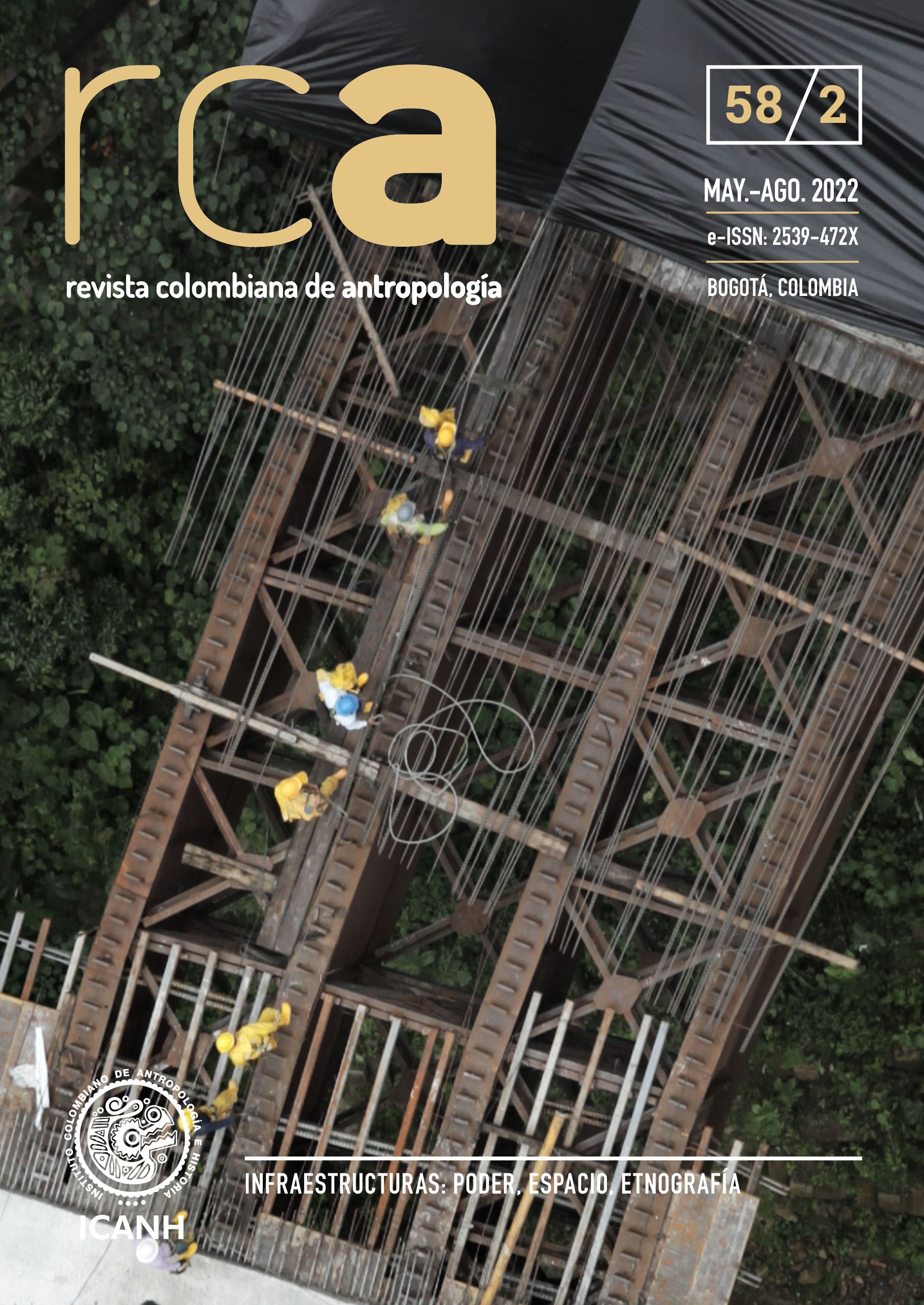Infrastructures: power, space, ethnography
DOI:
https://doi.org/10.22380/2539472X.2370Downloads
References
Abram, Simone, Brit Ross Winthereik y Thomas Yarrow, eds. 2019. Electrifying anthropology: exploring electrical practices and infrastructures. Nueva York, NY: Bloomsbury Academic.
Acevedo-Guerrero, Tatiana. 2019. “Light is like water: flooding, blackouts, and the state in Barranquilla”. Tapuya: Latin American Science, Technology and Society 2 (1): 478-494. https://doi.org/10.1080/25729861.2019.1678711
Álvarez, Rubén. 2020. “Bloquean puente Roncador para exigir compensaciones”. El Universal, 4 de septiembre. Consultado el 22 de enero de 2022. https://www.eluniversal.com.co/regional/bloquean-puente-roncador-para-exigir-compensaciones-DA3424544
Appel, Hannah, Nikhil Anand y Akhil Gupta. 2018. “Temporality, politics and the promise of infrastructure”. En The promise of infrastructure, editado por Nikhil Anand, Akhil Gupta y Hannah Appel, 1-38. Durham: Duke University Press.
Benjamin, Walter. 1969. Illuminations: essays and reflections. Editado por Hannah Arendt. Nueva York: Schocken.
Björkman, Lisa. 2015. Pipe politics, contested waters. Durham: Duke University Press.
Carse, Ashley. 2012. “Nature as infrastructure: making and managing the Panama canal watershed”. Social Studies of Science 42 (4): 539-563. https://doi.org/10.1177/0306312712440166
—. 2014. Beyond the big ditch: politics, ecology, and infrastructure at the Panama canal. Cambridge: MIT Press.
Carse, Ashley y David Kneas. 2019. “Unbuilt and unfinished: the temporalities of infrastructure”. Environment and Society 10 (1): 9-28. https://doi.org/10.3167/ares.2019.100102
Correa, María Victoria. 2020. “El costoso puente que se le atraviesa a la navegabilidad”. El Colombiano, 4 de mayo. Consultado el 22 de enero de 2022. https://www.elcolombiano.com/colombia/puente-yati-bodega-y-la-navegabilidad-del-rio-magdalena-FJ12930894
Dalakoglou, Dimitris y Penny Harvey, eds. 2016. Roads and anthropology: ethnography, infrastructures, (im)mobility. Londres: Routledge.
Farmer, Paul. 2004. “An anthropology of structural violence”. Current Anthropology 45 (3): 305-325. https://www.jstor.org/stable/10.1086/382250
Fisch, Michael. 2018. An anthropology of the machine: Tokyo’s commuter train network. Chicago: The University of Chicago Press.
Fondo de Adaptación. (S. f.). “Proyecto interconexión vial Yatí-Bodega”. Consultado el 22 de enero de 2022. https://www.fondoadaptacion.gov.co/yatibodega/
Guzmán Peñuela, Laura. 2020. “Buscar la forma: ir sometiéndose y andar toriando caminos en el norte del Tolima, Colombia”. Virajes 23 (1): 65-99. https://es.readkong.com/page/buscar-la-forma-ir-sometiendose-y-andar-toriando-caminos-4568743
Harvey, David. 2006. Spaces of global capitalism. Londres; Nueva York: Verso.
Invías (Instituto Nacional de Vías). 2020. “Fondo de Adaptación, entrega al Invías la interconexión vial ‘Yatí-La Bodega’ en Bolívar para ser puesta en operación”. https://www.invias.gov.co/index.php/sala/noticias/3772-fondo-de-adaptacion-entrega-al-inviasla-interconexion-vial-yati-la-bodega-en-bolivar-para-ser-puesta-en-operacion
“¿Por qué no empieza a funcionar el puente Yatí-Bodega?”. 2020. W Radio. Consultado el 22 de enero de 2022. https://www.wradio.com.co/noticias/regionales/por-que-no-empieza-a-funcionar-el-puente-yatibodega/20200225/nota/4017749.aspx
Quiroga Manrique, Catalina y Diana Vallejo Bernal. 2019. “Territorios de agua: infraestructura agrícola, reforma agraria y palma de aceite en el municipio de Marialabaja (Bolívar)”. Revista Colombiana de Antropología 55 (1): 59-89. https://doi.org/10.22380/2539472X.570
Ramakrishnan, Kavita, Kathleen O’Reilly y Jessica Budds. 2021. “The temporal fragility of infrastructure: theorizing decay, maintenance, and repair”. Environment and Planning E: Nature and Space 4 (3): 674-695. https://doi.org/10.1177/2514848620979712
Rodgers, Dennis y Bruce O’Neill. 2012. “Infrastructural violence: introduction to the special issue”. Ethnography 13 (4): 401-412. https://doi.org/10.1177%2F1466138111435738
Serje, Margarita y Diana Ardila. 2017. “El río como infraestructura: paisaje y navegación en el río Meta, Colombia”. Fronteiras: Journal of Social, Technological and Environmental Science 6 (1): 95-119. https://doi.org/https://doi.org/10.21664/2238-8869.2017v6i1.p95-119
Singh, Zunino Dhan, Melina Piglia y Valeria Gruschetsky, coords. 2021. Introducción a Pensar las infraestructuras en Latinoamérica, 9-21. Buenos Aires: Editorial Teseo.
Star, Susan Leigh. 1999. “The ethnography of infrastructure”. American Behavioral Scientist 43 (3): 377-391. https://doi.org/10.1177/00027649921955326
Tuan, Yi-Fu. 2001. Space and place: the perspective of experience. Minneapolis, MN: University of Minnesota Press.
Uribe, Simón. 2020. “ The trampoline o f d eath: infrastructural v iolence i n C olombia’sPutumayo frontier”. The Journal of Transport History 41 (1): 47-69. https://doi.org/10.1177/0022526619888589
Uribe, Simón, Silvia Otero-Bahamón e Isabel Peñaranda. 2021. “Hacer el estado: carreteras, conflicto y órdenes locales en los territorios de las FARC”. Revista de Estudios Sociales 75: 87-100. https://doi.org/10.7440/res75.2021.08.
Virilio, Paul. 1986. Speed and politics: an essay on dromology. Nueva York, NY: Columbia University Press. Winner, Langdon. 1980. “Do artifacts have politics?”. Daedalus 109 (1): 121-136. https://www.jstor.org/stable/20024652
Downloads
Published
How to Cite
Issue
Section
License

This work is licensed under a Creative Commons Attribution-NonCommercial-NoDerivatives 4.0 International License.




















